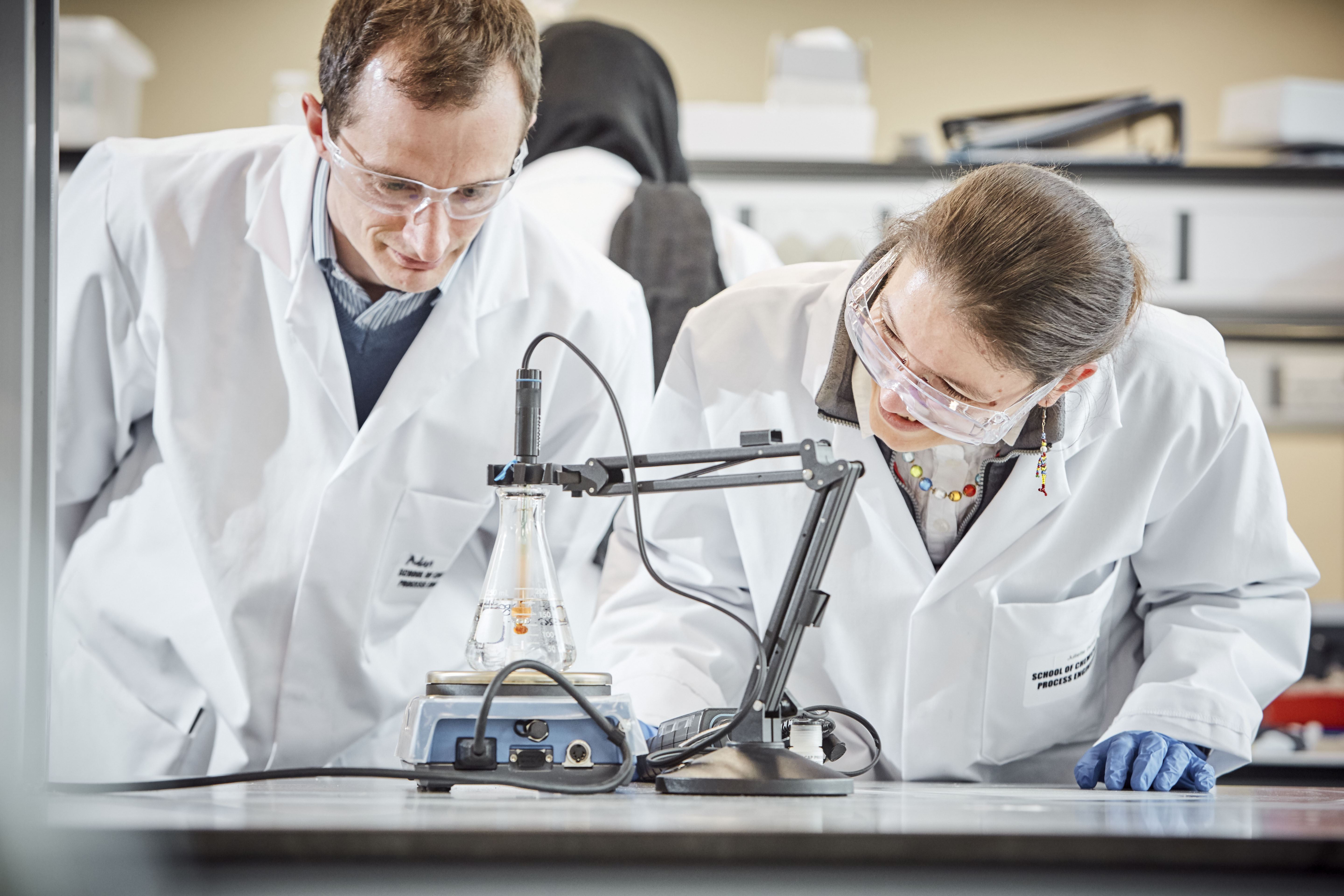Research Themes
The overarching vision of the CDT in Molecules to Product is supported by three themes.

Product Functionalisation and Performance
The majority of chemical products are multi-component systems, where the performance is dictated by the structure of the product. Examples of performance include the prevention of nucleation of plate-like wax crystals in a diesel engine; the ‘mouthfeel’ performance of a food product, and the efficiency of delivery of an active ingredient such as an enzyme in a washing powder. The interactions of several components of chemical products including dissolved small molecules, polymers, particles, emulsion droplets, within the final matrix leads to specific rheological, optical and mechanical properties that are key to delivering product performance. This theme will serve to facilitate the understanding of the relationship between the ingredient interactions and the final product structure combining experimental and modelling approaches with the resulting knowledge influencing the development of sophisticated added functionality for these products.

Product Characterisation
Continuous characterisation is an essential component to solving the challenges in the product development lifecycle. This theme will utilise the UoL strength in analytical science and its associated facilities alongside those available through the Henry Royce Institute. Through the application of appropriate characterisation techniques, an understanding of the role, interaction and effect of each component on the final product, with particular emphasis on how processing conditions impact these components, will be achieved. Temporally resolved physical, chemical and mechanical measurements will be used to assess and monitor important properties including stability and performance including deposition, and aggregation, and will serve as inputs for predictive models. Areas of focus will include: the attainment of structure-performance correlations; root cause analysis of observed synergistic/antagonistic effects; and sequential and holistic assessment of formed products.

Process Modelling between Scales
The objective of this theme is to generate insights that can both inform, and be informed by, design for function approaches and experimental characterisation. Such insights can be used to identify, and then optimise, the quality attributes that control performance during product application by end-users. For the delivery of the overall vision, it is necessary that the modelling methodologies embrace novel approaches for structure assembly, and are not constrained by current technological blocks as presented by conventional unit operations. Multiscale modelling requires a computational framework for the exchange of information between multiple solvers which do not need to be based on first principles approaches. Empirical based modelling and machine based learning will play a critical role in developing process models between scales. Furthermore, an object orientated approach can provide a digital identity for facilitating the coupling of models across the continuum. The key is thus to digitally encode the critical attribute descriptors so they can be interrogated by the different scale models.

